
Fundamentals
The concept of ‘Egyptian Hair Care’ transcends a simple definition; it signifies a profound historical and cultural approach to nurturing hair, deeply intertwined with the ancient civilization of Egypt. It represents a system of practices, ingredients, and beliefs that honored hair not merely as an aesthetic feature but as a conduit for spiritual connection, social status, and personal well-being. This ancient tradition, far from being a relic of the past, offers foundational insights into holistic hair wellness, particularly relevant for understanding and caring for textured hair today.
At its core, Egyptian Hair Care involved meticulous attention to cleanliness, protection from environmental elements, and the enhancement of natural hair qualities. The meaning of this care system extended beyond superficial adornment, embodying a deeper understanding of hair as a living extension of self. It was a practice rooted in the natural abundance of the Nile Valley, utilizing a rich palette of botanicals and minerals to maintain scalp health and hair vitality. The fundamental premise was a respectful partnership with nature, recognizing the inherent power of plant-derived remedies and ritualistic application.
Egyptian Hair Care, at its heart, is a testament to ancient wisdom, viewing hair as a sacred extension of identity and a recipient of meticulous, nature-infused reverence.
The practices encompassed a spectrum of routines, from daily cleansing and oiling to elaborate styling and adornment. These routines were not haphazard; they were deliberate, often communal acts that reinforced social bonds and cultural identity. The foundational elements of this care system included a diverse array of natural oils, herbal concoctions, and mineral-based treatments, all applied with an understanding of their protective and restorative properties. The legacy of these practices continues to inform contemporary approaches to natural hair care, demonstrating an enduring wisdom passed down through generations.
For individuals with textured hair, the echoes of Egyptian Hair Care are particularly resonant. The arid climate of ancient Egypt necessitated intensive moisturizing and protective styling, principles that remain cornerstones of textured hair maintenance. The emphasis on oils like castor, moringa, and almond speaks to a shared ancestral knowledge of ingredients that nourish and shield delicate strands from dryness and breakage. These historical precedents offer a powerful validation of traditional Black and mixed-race hair care practices, underscoring a continuous lineage of wisdom that predates modern commercial products.
Understanding the elementary principles of Egyptian Hair Care involves recognizing its dual purpose ❉ aesthetic beautification and practical preservation. Hair was a canvas for artistry, reflecting societal roles and personal expression. Simultaneously, it was a biological entity requiring protection from the harsh desert sun and sand, as well as from common ailments like lice. The ingenuity of ancient Egyptians in addressing these needs laid a groundwork for hair care that remains remarkably pertinent for diverse hair textures globally.
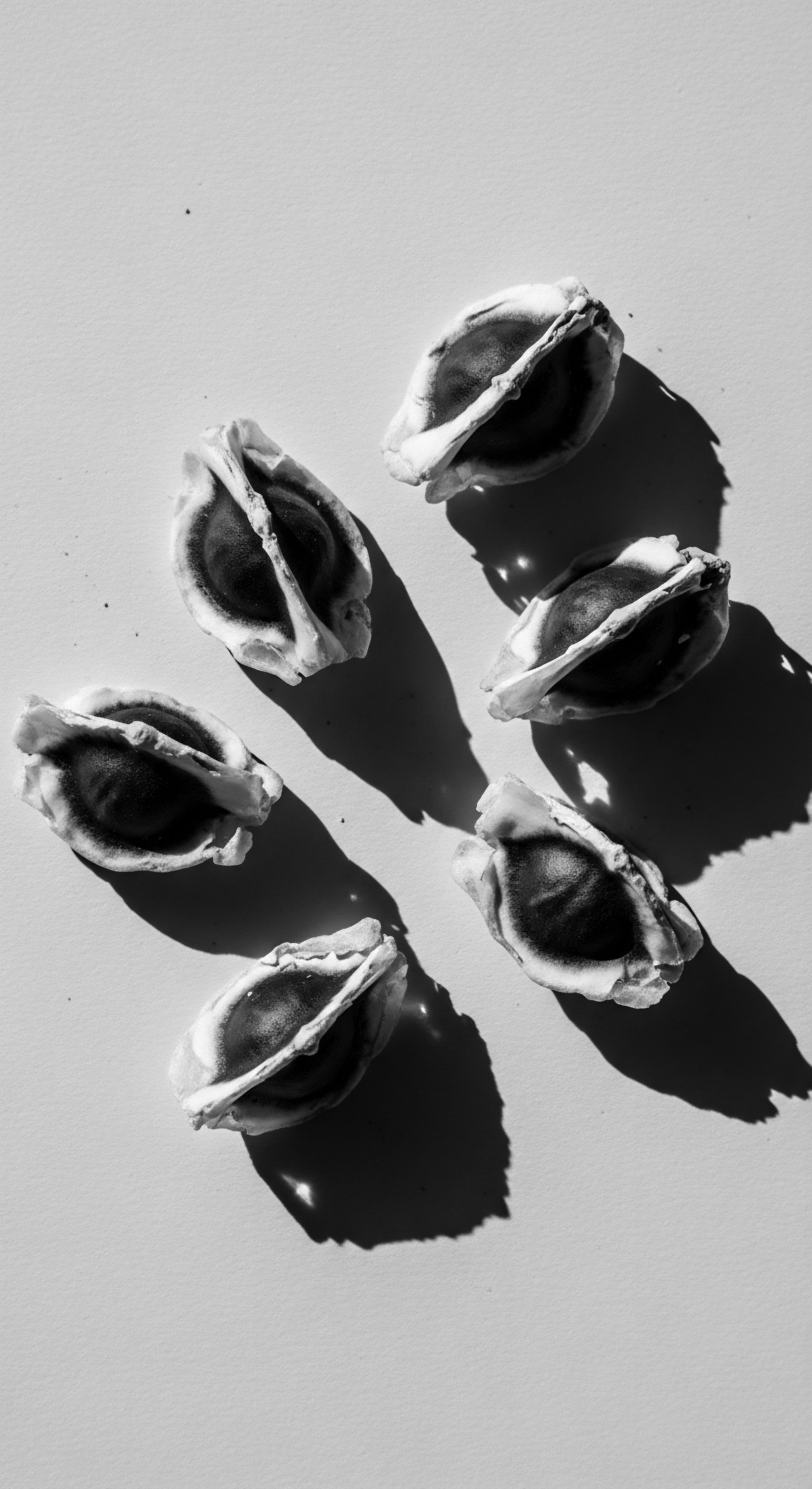
Early Practices and Elemental Components
Ancient Egyptians demonstrated an early appreciation for the intrinsic properties of natural substances in their hair care regimens. Their environment, while challenging, provided a bounty of resources that were carefully selected for their beneficial effects. The meaning they ascribed to these elements was not solely scientific but also spiritual, believing that certain plants and minerals carried life-giving energies.
- Castor Oil ❉ Widely cultivated, castor oil was a staple, valued for its emollient and fortifying qualities. It was employed to condition hair, enhance its growth, and strengthen follicles, often warmed and massaged into the scalp.
- Moringa Oil ❉ Known as “Ben Oil” or “Miracle Oil,” moringa oil was prized for its lightweight texture and rich antioxidant content. It nourished the scalp, promoted healthy hair growth, and protected strands from environmental damage. Jars of moringa oil have been discovered in ancient Egyptian tombs, signifying its importance.
- Almond Oil ❉ Applied for its moisturizing properties, almond oil contributed to soft, smooth hair, often used in conjunction with other oils to create comprehensive treatments.
- Fenugreek ❉ This herb, often in seed form, was incorporated into hair remedies to strengthen hair, reduce flakiness, and stimulate growth, properties still recognized in traditional wellness practices today.
- Honey ❉ A natural humectant, honey was blended into hair masks to draw moisture into the hair, providing deep hydration and a lustrous appearance, while also offering antibacterial and antifungal benefits for scalp health.
- Beeswax ❉ Utilized for styling and protection, beeswax helped to seal in moisture, smooth the hair cuticle, and provide a polished finish, guarding hair from the elements.
The deliberate combination of these ingredients speaks to a sophisticated understanding of hair biology and environmental factors. They recognized that healthy hair began with a healthy scalp, and their practices reflected this integrated perspective. The continued relevance of these elemental components in modern textured hair care products underscores the timeless efficacy of ancient Egyptian wisdom.
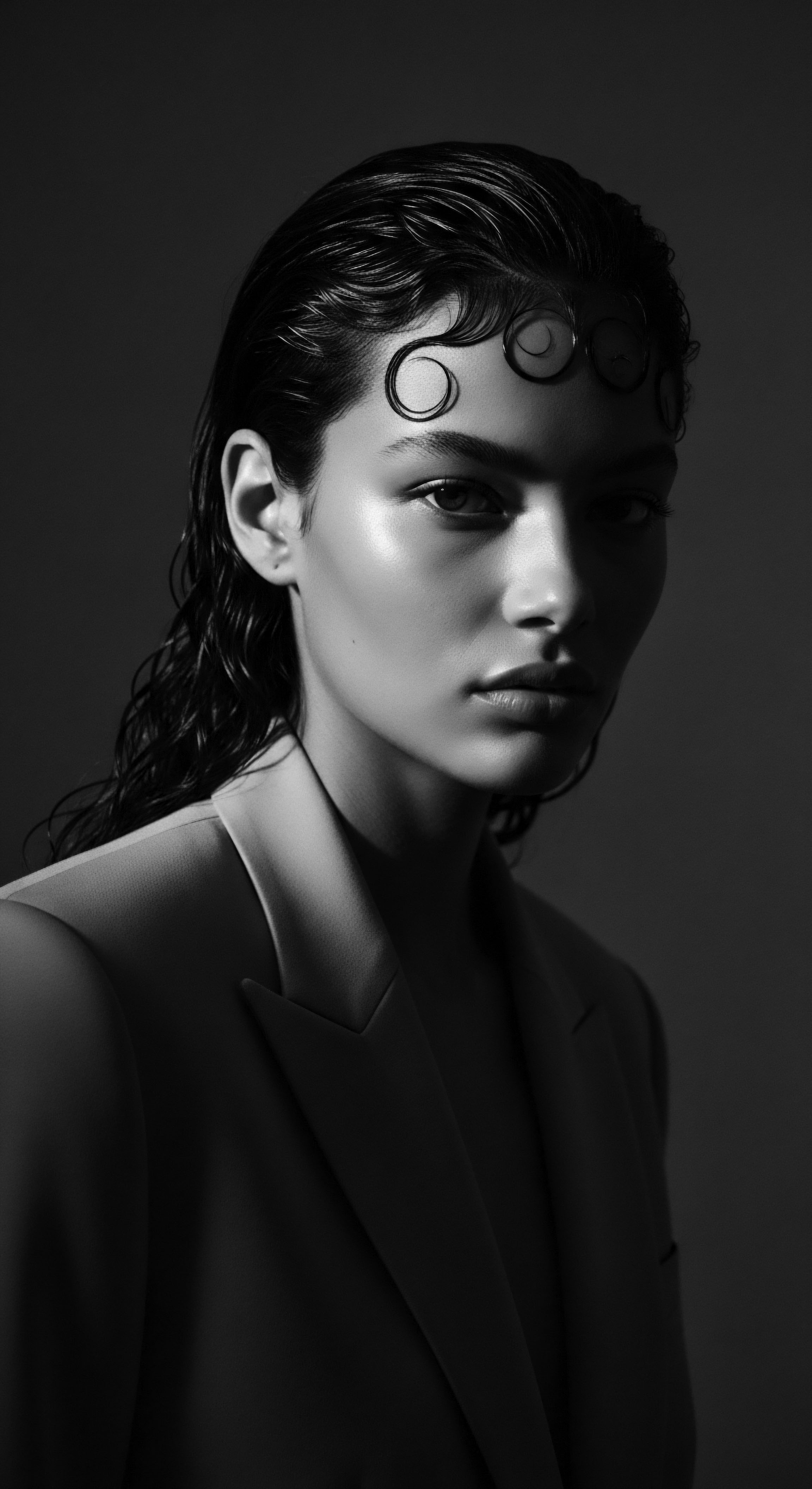
Intermediate
Expanding upon the foundational understanding, the intermediate meaning of Egyptian Hair Care reveals a more complex system where aesthetics, hygiene, social stratification, and spiritual beliefs were inextricably linked. This goes beyond simple application, moving into the realm of ritual, status, and the continuous thread of cultural practices that shaped identity. The interpretation of Egyptian Hair Care at this level acknowledges its sophisticated integration into daily life and its symbolic significance within a hierarchical society.
The Egyptian approach to hair care was not merely about appearance; it was a deliberate articulation of one’s place within the cosmic order and the community. Hair served as a powerful visual signal, conveying gender, age, social status, and even one’s role in society. The choices made regarding hairstyles, wigs, and adornments were deeply purposeful, reflecting a society where every detail held meaning. This depth of intentionality is a key aspect of its intermediate definition.
Beyond mere aesthetics, Egyptian Hair Care was a sophisticated language of identity, where each strand, style, and adornment spoke volumes about social standing and spiritual connection.
Hygiene played a central role, driven by both comfort in a hot climate and spiritual purity. Shaving the head was common for priests and for practical reasons, such as preventing lice infestations. Wigs, crafted with remarkable skill from human hair, wool, or plant fibers, provided protection from the sun, offered a canvas for elaborate styling, and denoted wealth and status. These hairpieces were often intricately braided and adorned with precious materials, signifying the wearer’s position in society and their connection to the divine.
The care routines were not just for the living; hair care extended into the afterlife. Cosmetic vessels, hair ornaments, and even styled wigs were placed in tombs, ensuring the deceased could maintain their refined appearance and spiritual well-being in eternity. This practice underscores the profound belief that beauty and personal care were essential components of existence, transcending the boundaries of life and death. The meaning of hair care thus broadened to encompass eternal life and regeneration.
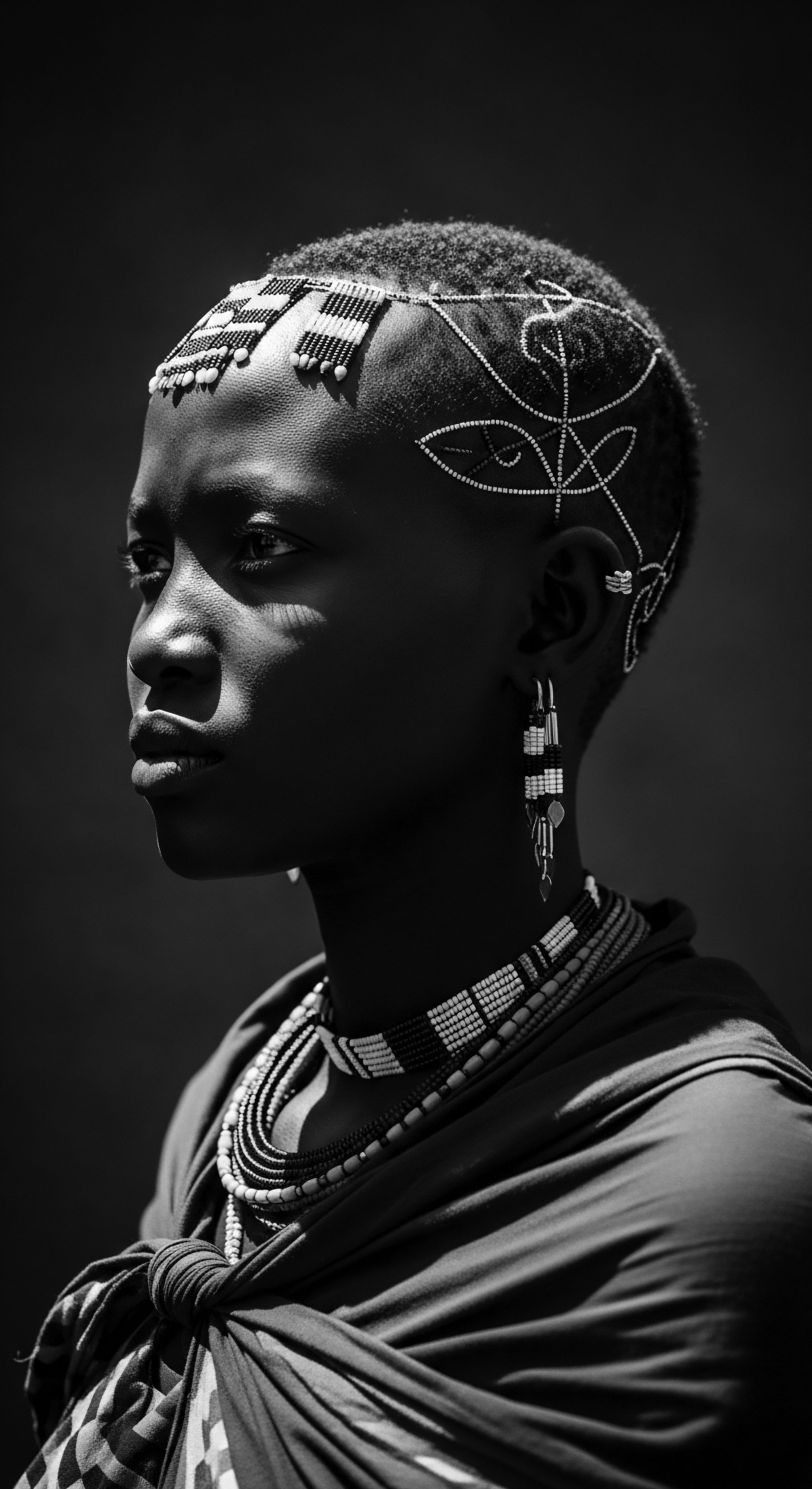
The Tender Thread ❉ Rituals and Adornments
The tender thread of Egyptian Hair Care practices speaks to the intricate rituals that accompanied the application of oils and the crafting of hairstyles. These were not solitary acts but often involved skilled hairdressers and communal gatherings, particularly among the elite. The process itself became a ritual, a moment of self-connection and cultural affirmation.
Ancient Egyptian hairdressers and wigmakers were highly skilled artisans. They meticulously braided human hair into numerous small plaits to create elaborate wigs and extensions. Elite men and women sported these intricate styles, often layered over their natural hair or shaven scalps.
The application of beeswax and animal fat helped set these styles, providing both hold and a lustrous sheen. This attention to detail and the artistry involved highlight the high value placed on hair as a form of self-expression and societal display.
| Ancient Practice Oiling with Castor, Moringa, Almond |
| Traditional Significance Hydration, strengthening, growth promotion, sun protection. |
| Modern Parallel for Textured Hair Pre-pooing, hot oil treatments, scalp massages for moisture retention and elasticity. |
| Ancient Practice Elaborate Braiding and Wig-Making |
| Traditional Significance Status symbol, hygiene, protection from elements, spiritual connection. |
| Modern Parallel for Textured Hair Protective styling (braids, twists), wigs, and extensions for low manipulation, length retention, and versatile styling. |
| Ancient Practice Use of Henna |
| Traditional Significance Hair coloring, conditioning, strengthening, scalp health. |
| Modern Parallel for Textured Hair Natural hair dyes, deep conditioning treatments, scalp balancing masks. |
| Ancient Practice Application of Honey and Beeswax |
| Traditional Significance Moisture retention, sealing, smoothing cuticles, protective barrier. |
| Modern Parallel for Textured Hair Humectant-rich deep conditioners, styling gels, and balms for curl definition and hold. |
| Ancient Practice The enduring wisdom of ancient Egyptian hair care continues to resonate, offering a historical blueprint for nourishing and protecting textured hair across generations. |
Adornments were also integral to the meaning of Egyptian Hair Care. Decorative combs, often crafted from ivory with intricate animal motifs, have been unearthed dating as early as 3900 BCE. These combs were not merely functional; they were artistic expressions, perhaps worn at festivals or as symbols of status.
Gold wig rings and other precious embellishments further highlighted the value placed on hair as a personal and societal asset. The attention to detail, from the choice of ingredients to the final adornment, reveals a culture that understood hair as a canvas for profound expression.
The spiritual dimension of hair care was equally compelling. Hair was considered a powerful source of benevolent magical energy for the living and the deceased. The cutting of a child’s sidelock, for instance, was a significant rite of passage, possibly signifying separation from childhood and offered to deities like Horus.
In times of mourning, women would dishevel their hair, allowing it to fall unkempt, symbolizing grief and a connection to the deceased. The goddess Isis, with her long, often disarrayed hair, embodied this powerful link between hair, mourning, and rebirth, demonstrating the deep spiritual significance embedded within every strand.
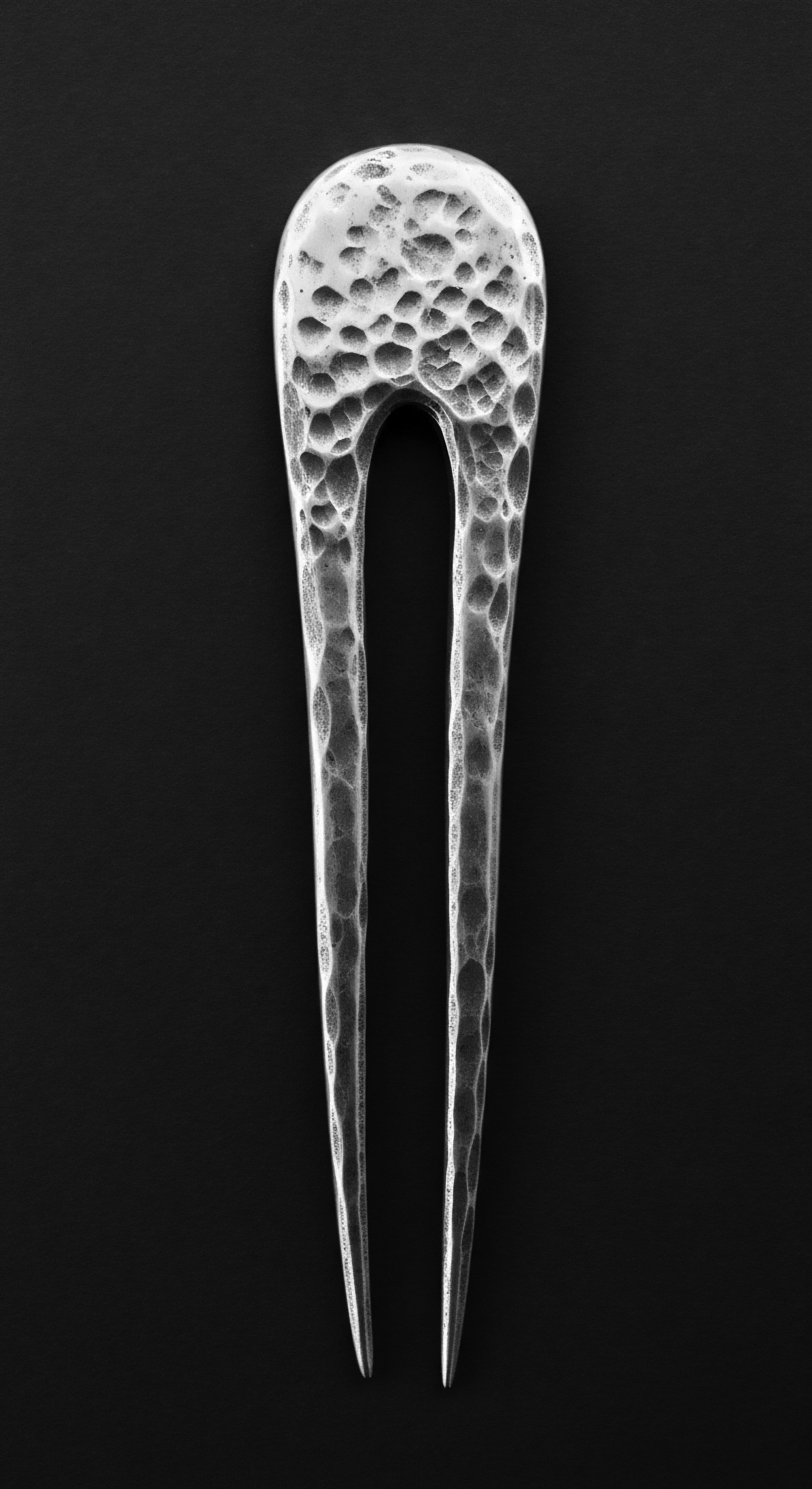
Academic
The academic definition of Egyptian Hair Care transcends a mere compilation of historical facts, positioning it as a sophisticated system of ethnobotanical, socio-cultural, and physiological practices. This system was meticulously developed over millennia within the unique ecological and spiritual context of the Nile Valley. It represents a complex interplay of scientific observation, ritualistic application, and a profound understanding of hair as a dynamic bio-cultural entity.
From an academic vantage point, Egyptian Hair Care signifies a holistic, ancestrally informed methodology for hair health and adornment, which consistently reflected and reinforced the prevailing social order, spiritual beliefs, and environmental adaptations of ancient Egyptian civilization. It is an enduring legacy that offers critical insights into the deep heritage of textured hair care, particularly for Black and mixed-race communities, by demonstrating historical precedents for practices that continue to nourish and affirm diverse hair types today.
This understanding requires a rigorous examination of archaeological evidence, textual analyses, and comparative anthropological studies, moving beyond anecdotal accounts to discern the underlying principles and long-term implications of these ancient practices. The meaning of Egyptian Hair Care, when viewed through this academic lens, reveals a society that intuitively grasped principles of trichology and dermatology, applying them with resources available in their environment. The focus was not solely on growth or appearance but on the integral health of the scalp and shaft, recognizing that hair vitality stemmed from its foundational well-being.
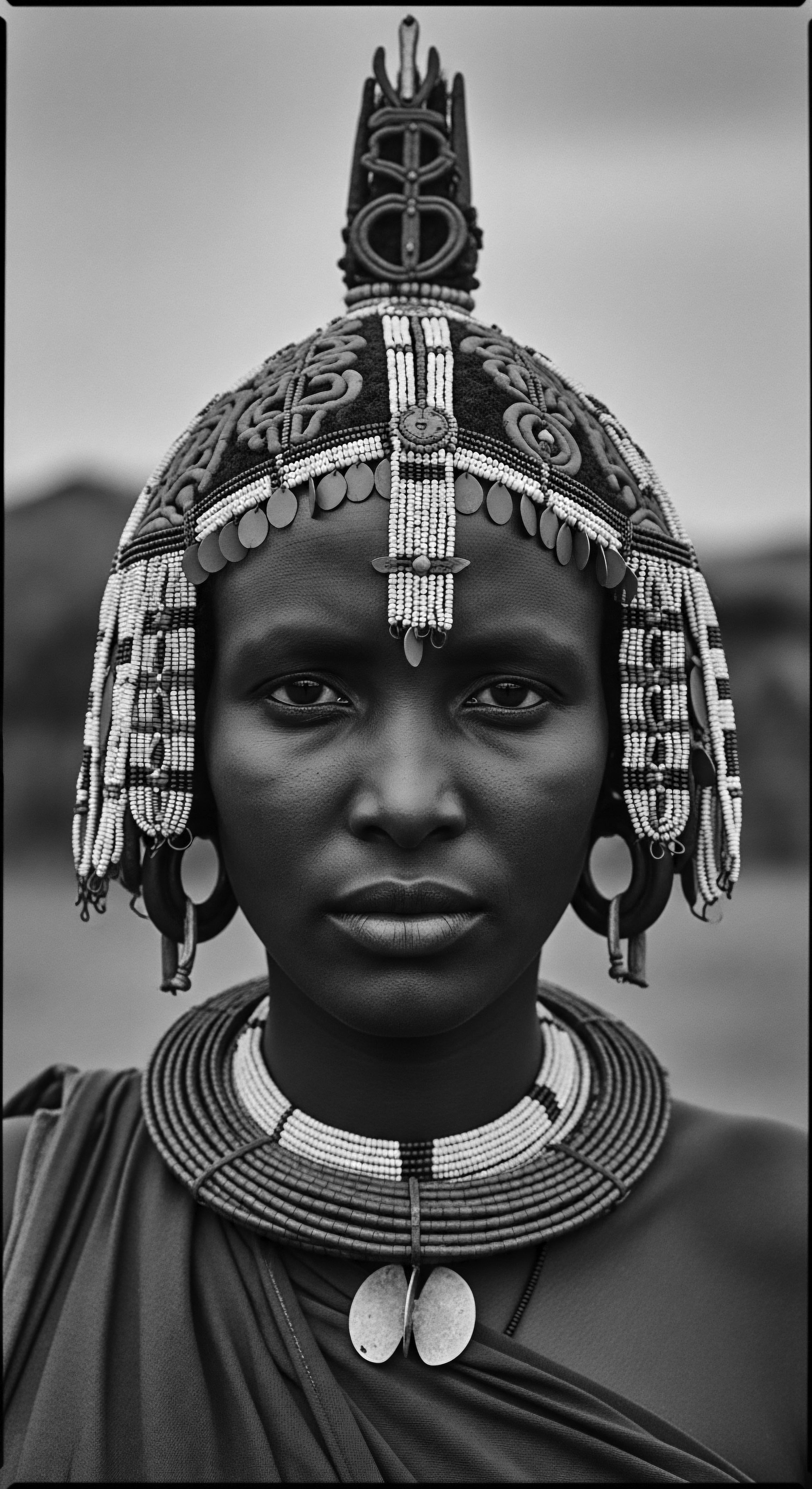
Echoes from the Source ❉ Bio-Cultural Adaptations
The foundational knowledge underpinning Egyptian Hair Care emerged from keen observation of the natural world and the human body’s responses to the arid North African climate. The scorching sun, abrasive sand, and dry winds presented significant challenges to hair integrity, necessitating innovative solutions for protection and moisture retention. This environmental pressure led to the systematic exploration of local flora for their emollient, humectant, and fortifying properties. The selection of ingredients like castor oil, moringa oil, and fenugreek was not arbitrary; it was a result of empirical testing and generational transmission of knowledge, identifying substances that demonstrably mitigated environmental stressors and promoted hair resilience.
For instance, the widespread use of castor oil (Ricinus communis) can be understood through its chemical composition. Ricinoleic acid, a primary component of castor oil, is a fatty acid known for its anti-inflammatory and antimicrobial properties. When applied to the scalp, it would have contributed to a healthier microbial environment, reducing irritation and promoting an optimal foundation for hair growth. This aligns with modern dermatological understanding of scalp health as a prerequisite for robust hair.
The Egyptians’ consistent use of such oils suggests an intuitive, perhaps ritualized, application of what we now understand as essential fatty acids and antioxidants for hair fiber integrity and scalp barrier function. The practice of warming oils before application, as indicated by some historical accounts, would have further enhanced penetration and efficacy, a technique still employed in contemporary deep conditioning treatments.
Ancient Egyptian hair care practices offer a profound testament to early human ingenuity, demonstrating a sophisticated, empirical understanding of botanicals for hair health that predates modern scientific nomenclature.
The cultural significance of hair was also profoundly linked to biological reality. Hair was perceived as a living entity, capable of expressing one’s spiritual state and social standing. This perspective is evident in funerary practices where elaborate wigs and hair adornments were prepared for the deceased, ensuring their continuity of identity and beauty in the afterlife.
This continuity highlights a deep-seated belief in the preservation of the physical self, including hair, for spiritual passage. The meticulousness of these preparations suggests a proto-scientific understanding of preservation, where the integrity of the hair contributed to the integrity of the individual’s journey beyond life.
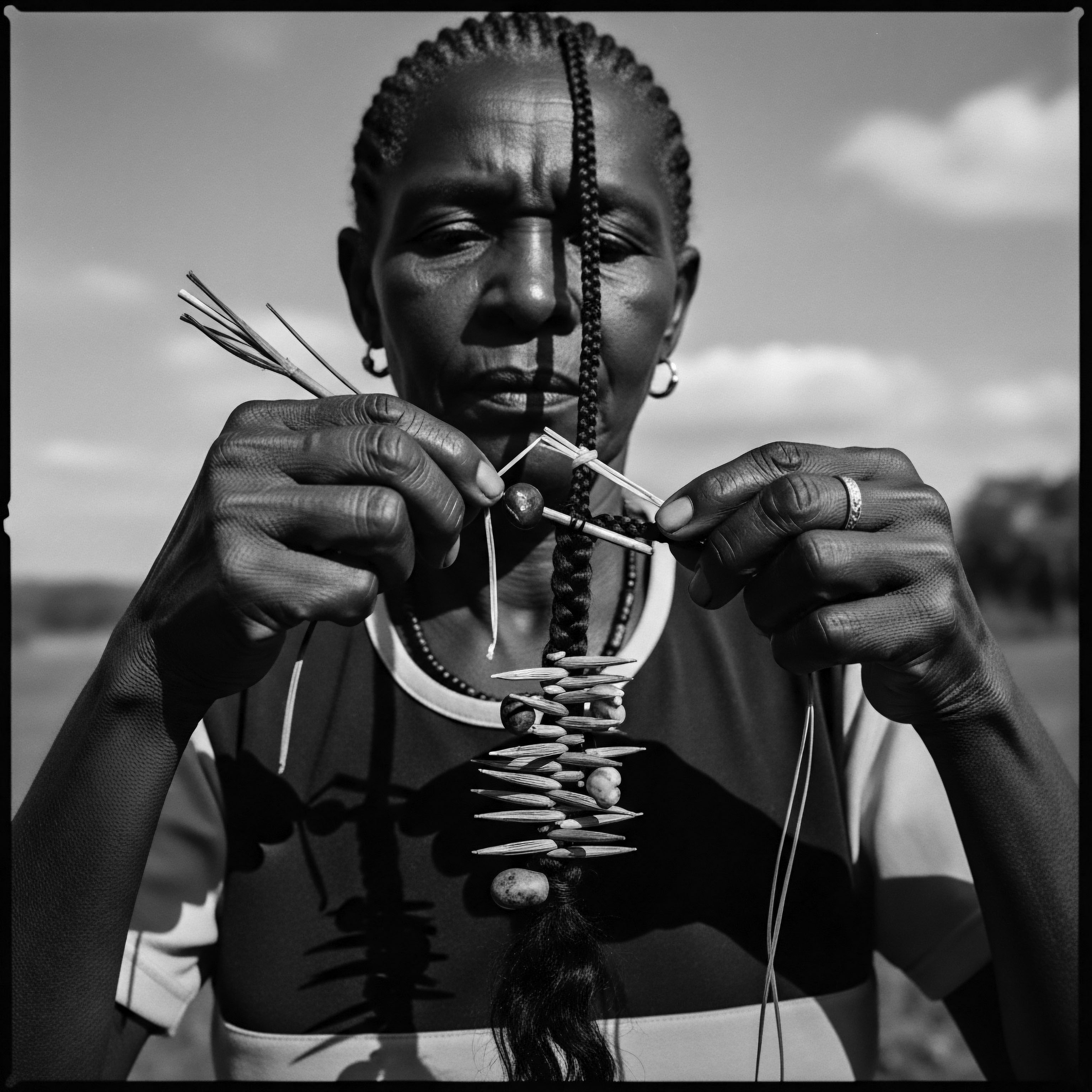
The Unbound Helix ❉ Identity, Resilience, and Ancestral Practices
The Egyptian Hair Care system provides a compelling historical narrative for the enduring significance of textured hair heritage. Contrary to some historical narratives that have sought to diminish the African origins of ancient Egyptian civilization, archaeological and anthropological evidence increasingly affirms the diverse physical characteristics of the ancient Egyptians, including the prevalence of tightly coiled and curly hair types. Studies examining ancient Egyptian hair samples have consistently revealed a range of textures, with a significant proportion exhibiting characteristics consistent with Afro-textured hair. For example, a 1971 study by Czech anthropologist Eugen Strouhal, analyzing hair samples from pre-dynastic Egyptians, reported hair cross-section indices ranging from 35 to 65.
These measurements fall well within the range typically associated with curly to tightly coiled African hair types, indicating that the natural hair texture of many ancient Egyptians was indeed curly. This finding is further supported by observations of tightly curled hair shafts within preserved mummy skin, suggesting the inherent texture was maintained even after millennia.
This scientific data directly challenges long-held misrepresentations and firmly connects ancient Egyptian hair practices to the broader heritage of textured hair. The elaborate braiding, coiling, and wig-making techniques depicted in ancient Egyptian art, often seen as stylized representations, likely drew inspiration from and adapted to the diverse natural hair textures of the population. The emphasis on protective styles, the use of emollients to prevent breakage and dryness, and the creation of extensions and wigs to add volume and length resonate profoundly with traditional Black and mixed-race hair care practices across the African diaspora. These are not coincidental similarities but rather a testament to an unbroken lineage of ancestral wisdom concerning the care and adornment of textured hair.
The historical context reveals that hair in ancient Egypt was not merely a biological feature but a powerful social and cultural signifier. Hairstyles communicated status, age, gender, and even religious devotion. For textured hair, this meant that the manipulation and adornment of curls, coils, and kinks became an art form, a means of expressing identity and resilience in a challenging environment.
The use of oils to maintain moisture and prevent tangling, the careful sectioning for braiding, and the creation of elaborate updos or wig structures provided both aesthetic appeal and practical protection for hair prone to dryness and breakage. This functional beauty allowed individuals to navigate their environment while maintaining hair health.
The continuity of these practices is particularly striking. Many techniques and ingredients found in ancient Egyptian hair care, such as the use of castor oil, moringa, and braiding, persist in traditional African and diasporic hair care today. This enduring relevance speaks to the efficacy and cultural embeddedness of these ancestral methods.
The “Unbound Helix” of textured hair heritage finds a foundational chapter in ancient Egypt, where hair was not just managed but celebrated, protected, and imbued with deep meaning. The historical evidence provides a powerful counter-narrative to contemporary biases against textured hair, demonstrating its ancient roots in beauty, sophistication, and cultural significance.
- Cultural Affirmation through Adornment ❉ The intricate hairstyles and wigs, often braided or coiled, served as visible markers of social standing and identity, reinforcing a sense of collective belonging and individual expression within the ancient Egyptian social fabric.
- Holistic Wellness Integration ❉ Beyond superficial beauty, Egyptian hair care practices were intertwined with overall health and spiritual well-being, reflecting a worldview where physical adornment was a manifestation of inner harmony and purity.
- Environmental Adaptation and Resilience ❉ The strategic selection and application of natural oils and protective styles represented an ingenious adaptation to the harsh desert climate, showcasing an early understanding of hair physiology and environmental protection.
The study of Egyptian Hair Care, therefore, becomes an academic pursuit that validates the ingenuity and cultural richness of ancient African peoples, particularly concerning their profound relationship with hair. It allows for a deeper understanding of how hair practices served as a complex system of communication, identity formation, and resilience, a legacy that continues to inform and strengthen the narrative of textured hair heritage globally. The meaning here is not static; it is a living, evolving interpretation of how ancestral wisdom continues to shape contemporary practices and perceptions.
| Ancient Oil (Botanical Name) Castor Oil (Ricinus communis) |
| Traditional Use in Egypt Hair growth, strengthening, scalp health, moisturizing. |
| Contemporary Benefit for Textured Hair Stimulates scalp circulation, promotes growth, seals moisture, reduces breakage, adds shine. |
| Ancient Oil (Botanical Name) Moringa Oil (Moringa oleifera) |
| Traditional Use in Egypt Nourishing scalp, promoting growth, antioxidant protection, lightweight moisture. |
| Contemporary Benefit for Textured Hair Non-greasy hydration, strengthens follicles, protects from environmental damage, improves elasticity. |
| Ancient Oil (Botanical Name) Almond Oil (Prunus dulcis) |
| Traditional Use in Egypt Softening, moisturizing, detangling. |
| Contemporary Benefit for Textured Hair Adds softness and shine, reduces frizz, aids in detangling, provides light moisture. |
| Ancient Oil (Botanical Name) Fenugreek Seed Oil (Trigonella foenum-graecum) |
| Traditional Use in Egypt Hair strengthening, anti-dandruff, growth stimulation. |
| Contemporary Benefit for Textured Hair Fortifies strands, reduces shedding, soothes scalp irritation, supports hair density. |
| Ancient Oil (Botanical Name) The enduring chemical and physiological benefits of these ancient oils continue to be valued in modern formulations designed for the unique needs of textured hair. |
The academic exploration of Egyptian Hair Care reveals that it was a dynamic and evolving practice, adapting to new knowledge and societal shifts while retaining its core principles. The integration of hair care into funerary rituals, for instance, underscores the profound belief in the continuity of identity and well-being beyond earthly existence. This practice, often overlooked in simplistic beauty narratives, provides a rich area for psycho-social and anthropological inquiry, exploring how cultural anxieties and aspirations were projected onto the very strands of hair. The meticulous preservation of hair on mummies, sometimes styled with products, provides invaluable direct evidence for these ancient practices, allowing modern researchers to analyze composition and technique.
Furthermore, the academic perspective considers the interconnectedness of Egyptian Hair Care with broader African hair traditions. While unique in its specific cultural context, it shares fundamental principles with hair care practices across the continent—the emphasis on natural ingredients, protective styling, and the symbolic power of hair. This connection reinforces the idea of a shared ancestral heritage of hair wisdom that transcends geographical boundaries, offering a more inclusive and accurate understanding of the origins of textured hair care. The enduring presence of African hair combs, often referred to as “Afro combs,” in ancient Egyptian tombs further illustrates this profound link, signifying a shared cultural continuity that extends far beyond the Nile Valley.
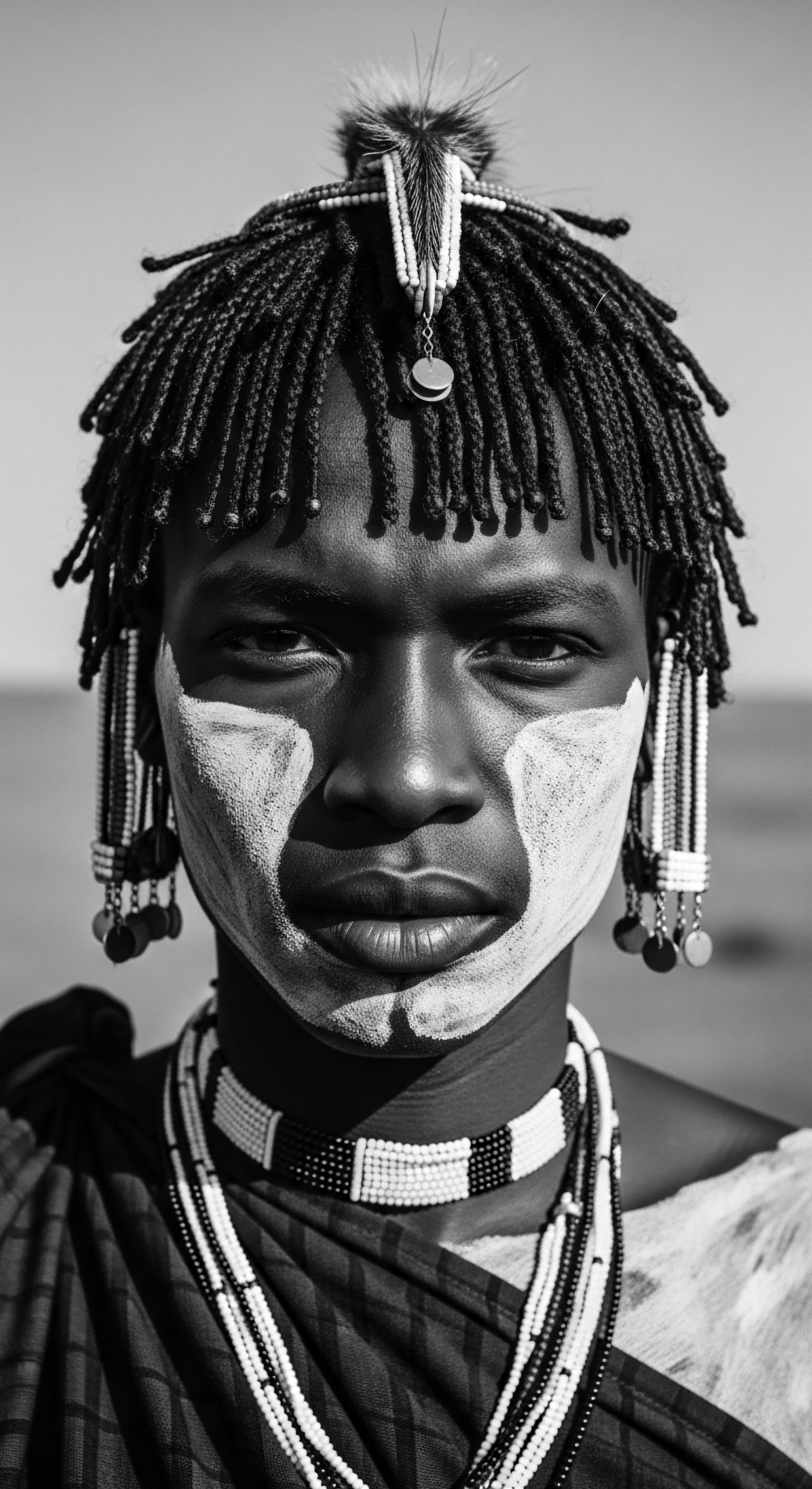
Reflection on the Heritage of Egyptian Hair Care
As we draw this meditation on Egyptian Hair Care to a close, we find ourselves standing at the confluence of ancient wisdom and contemporary resonance. The journey through its layered definitions—from elemental practice to academic inquiry—has revealed a profound truth ❉ hair, particularly textured hair, holds within its very structure the echoes of ancestral narratives. The ‘Soul of a Strand’ ethos, which guides Roothea’s living library, finds a vibrant affirmation in the enduring legacy of Egyptian hair traditions. These practices were not fleeting trends; they were deeply rooted expressions of identity, spiritual connection, and an ingenious adaptation to the world.
The heritage of Egyptian Hair Care offers more than historical curiosity; it presents a mirror reflecting the resilience and ingenuity of Black and mixed-race hair experiences across millennia. It reminds us that the quest for hair health and beauty is an ancient one, pursued with reverence and resourcefulness long before the advent of modern chemistry. The consistent use of natural oils, the meticulous attention to scalp health, and the artistry of protective styles all speak to a continuity of wisdom that has been passed down through generations, often silently, within families and communities. This unbroken lineage connects the elaborate braided wigs of ancient queens to the intricate twists and coils celebrated in contemporary natural hair movements.
In reflecting upon this heritage, we recognize that every coil, every kink, every wave carries a story—a story of survival, creativity, and profound cultural meaning. The ancient Egyptians, through their dedicated hair care, demonstrated a deep respect for the hair’s inherent capabilities and its capacity to voice identity. Their practices serve as a powerful validation of traditional knowledge, affirming that the wisdom of our ancestors holds invaluable lessons for our modern hair journeys.
The significance of Egyptian Hair Care, therefore, extends beyond the sands of time, offering an invitation to reconnect with the ancestral rhythms of care, to honor the sacredness of our strands, and to recognize the enduring beauty woven into the very fabric of textured hair heritage. It is a legacy that continues to inspire, to heal, and to remind us of the boundless strength and spirit residing within each individual strand.

References
- Corson, R. (2003). Fashions in Hair ❉ The First Five Thousand Years. Peter Owen Publishers.
- Fletcher, J. (2007). Hair in Ancient Egypt ❉ An Introduction. In A. M. Jones (Ed.), Archaeological Textiles ❉ Volume 2, The Study of Dress and Textiles. British Museum Press.
- Ikram, S. (2003). Death and Burial in Ancient Egypt. Longman.
- Manniche, L. (1999). Sacred Luxuries ❉ Fragrance, Aromatherapy, and Cosmetics in Ancient Egypt. Cornell University Press.
- Nunn, J. F. (2002). Ancient Egyptian Medicine. University of Oklahoma Press.
- Robins, G. (2008). The Art of Ancient Egypt. Harvard University Press.
- Strouhal, E. (1971). Anthropological Analysis of the Hair of Ancient Egyptians. Anthropologie (Brno), 9(2), 97-101.
- Wilkinson, R. H. (2003). The Complete Gods and Goddesses of Ancient Egypt. Thames & Hudson.
- Brier, B. & Hobbs, H. (2008). Daily Life of the Ancient Egyptians. Greenwood Press.
- Tassie, G. J. (2014). The Social and Ritual Contextualisation of Ancient Egyptian Hair and Hairstyles from the Protodynastic to the End of the Old Kingdom. UCL Discovery.
- Marshall, A. (2025). The Magic and Power of Hair in Ancient Egypt. The Past.
- Lovell, N. C. (1999). Dental Evidence for the Origin of the Ancient Egyptians. In R. O. Collins (Ed.), The History of Egypt ❉ From Earliest Times to the Present. University of Cambridge Press.
- Smith, S. T. (2001). Wretched Kush ❉ Ethnic Identities and Boundaries in Egypt’s Nubian Empire. Routledge.
- Ehret, C. (1996). The Civilizations of Africa ❉ A History to 1800. University Press of Virginia.
- Strouhal, E. (1992). Life of the Ancient Egyptians. University of Oklahoma Press.
